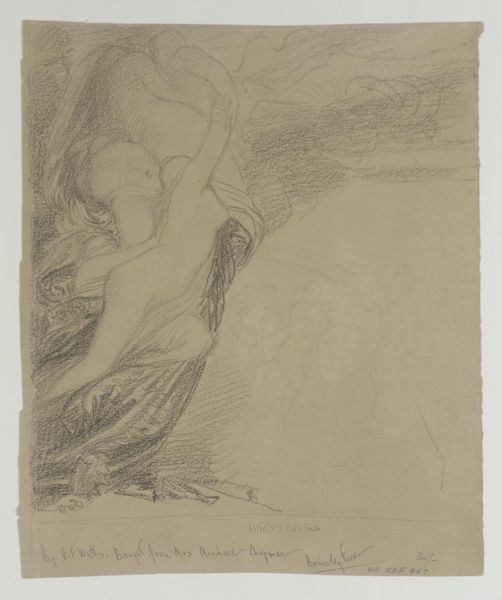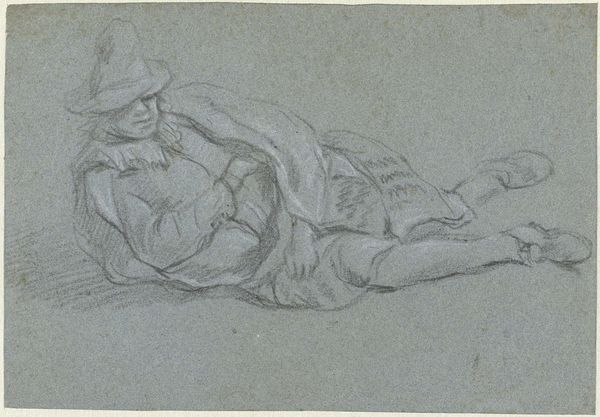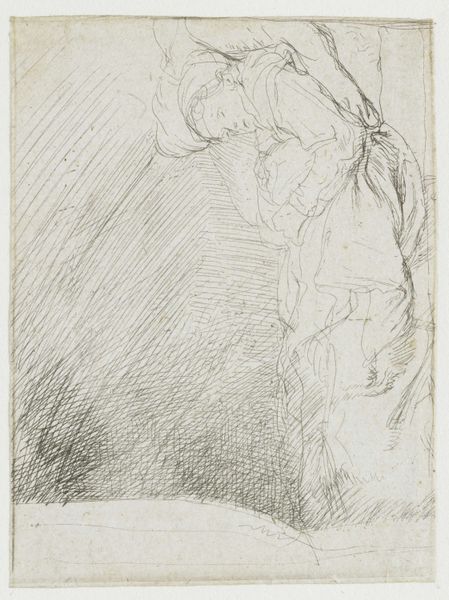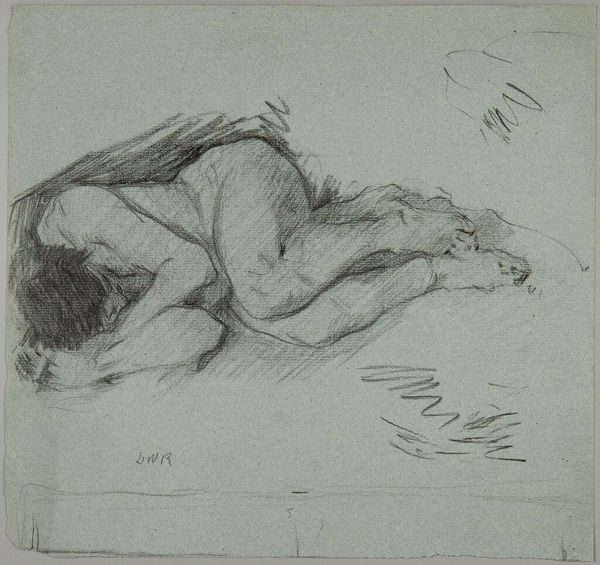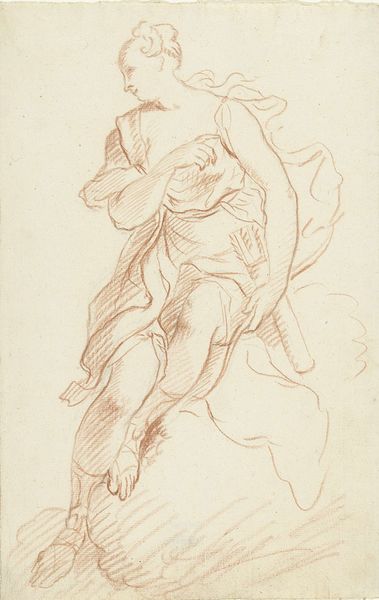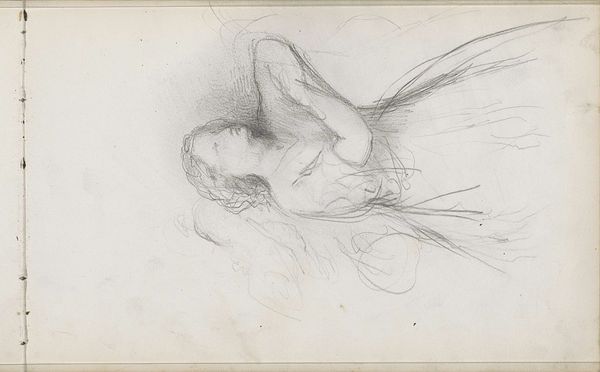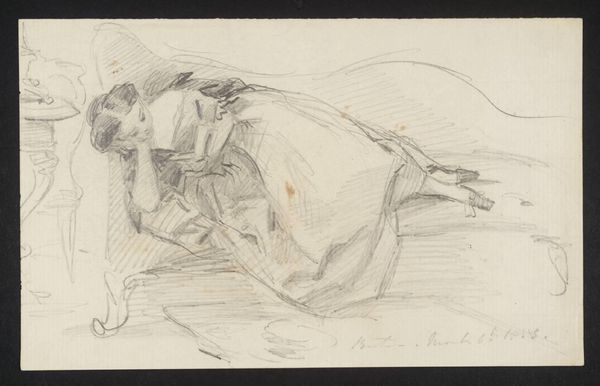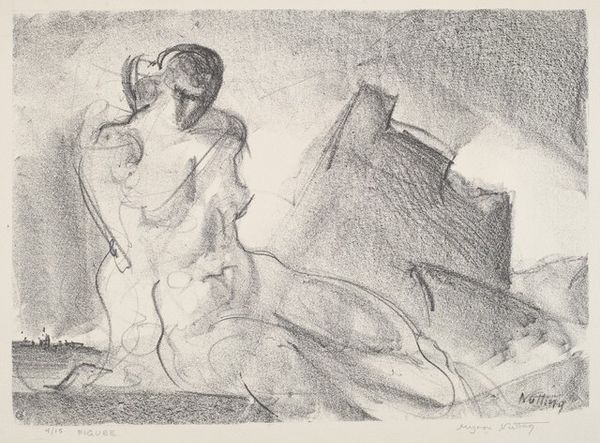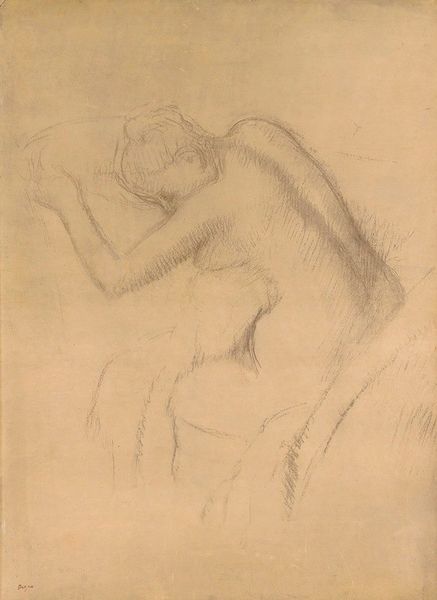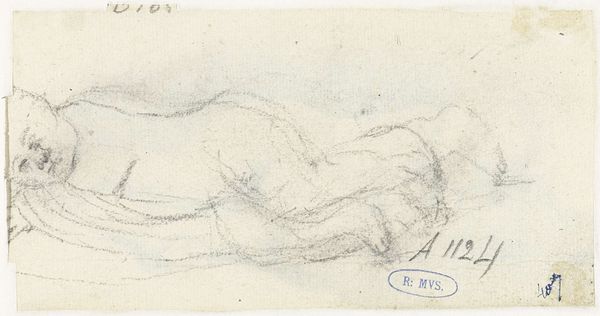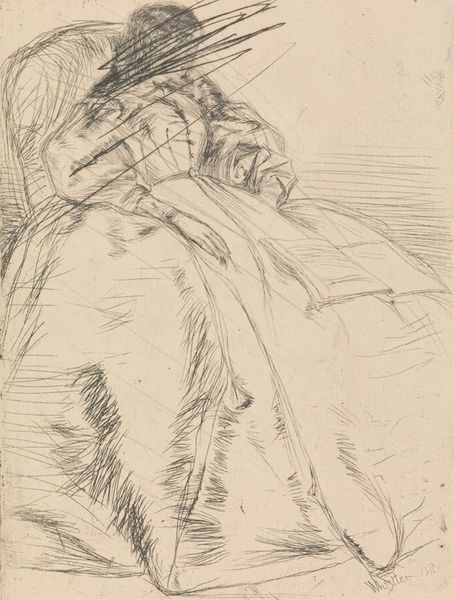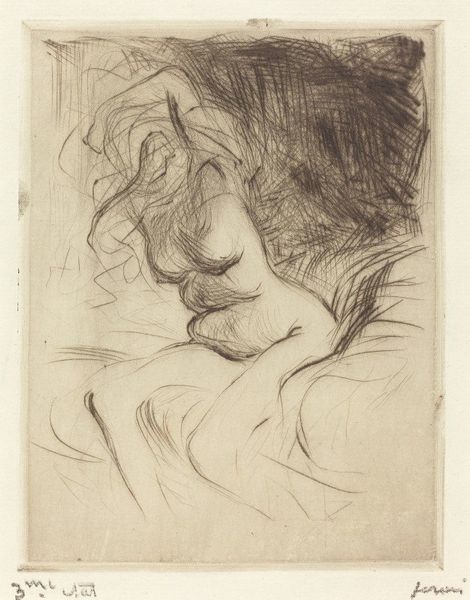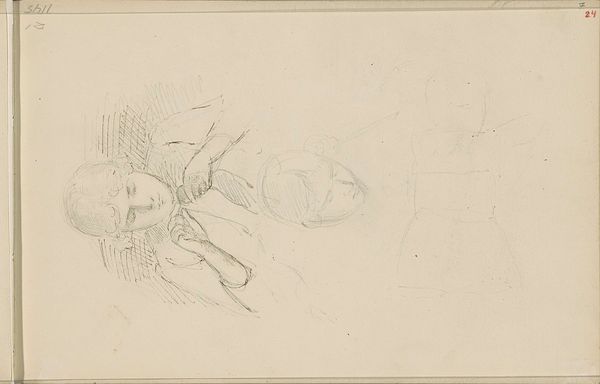
#
amateur sketch
#
light pencil work
# print
#
pen sketch
#
pencil sketch
#
etching
#
ink drawing experimentation
#
pen-ink sketch
#
pen work
#
pencil work
#
initial sketch
Dimensions: plate: 13.7 x 15.8 cm (5 3/8 x 6 1/4 in.) sheet: 15.1 x 18 cm (5 15/16 x 7 1/16 in.)
Copyright: National Gallery of Art: CC0 1.0
Editor: Here we have "Three Figures" by Jacques Villon. It's a print, an etching to be exact, with intricate pen and pencil work. The figures seem almost dissolved into the background; it’s as if Villon is trying to capture movement, not a static image. What strikes you about this piece? Curator: The strength of this work resides precisely in that dissolution. Note how Villon uses dense cross-hatching not to describe volume in a traditional sense, but to create a unified field of visual incident. The figures aren't merely "in" the space, they are made *of* it. Consider how the interplay between line, tone and the stark whiteness of the paper challenges our reading of form versus void. Does the composition invite you to consider alternative readings, beyond a mimetic representation of three figures? Editor: Absolutely. It feels more about the relationship between lines and shapes than about representing anything literally. I see that interplay everywhere. It makes me think – is it about the subject at all, or about the artist's process? Curator: Indeed! And we can understand that relationship through semiotics; the signifiers of line and tone operate here to generate meaning that transcends simple denotation. What philosophical ideas do you think the artist explored with such techniques? Editor: Maybe exploring the deconstruction of form itself, challenging traditional ideas of perspective and representation? Something about the breakdown reminds me of Cubism, even though it doesn't explicitly depict multiple viewpoints. Curator: Precisely. By fragmenting the forms through line, and distributing visual interest equally across the composition, Villon evokes a sense of dynamism, an interrogation of the very structure of perception itself. Editor: That makes the work feel so modern, despite perhaps lacking the colour we may find in a painting of that era. Now I can really appreciate his approach. Curator: Indeed. A very useful excercise in understanding modern printmaking!
Comments
No comments
Be the first to comment and join the conversation on the ultimate creative platform.
